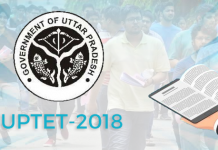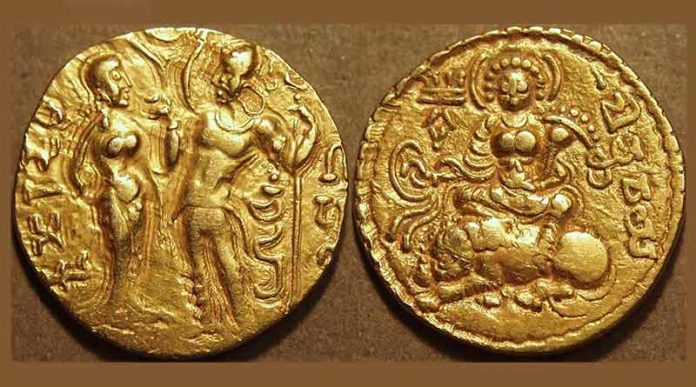The Gupta Empire was founded by Sri Gupta and it lasted from 320 CE to 550 CE marking the Golden Age of India as it was an age of amazing philosophy, art, religion, science, mathematics, astronomy, dialectic, literature and architectural achievements.
The Gupta Empire was spread across north, east and west India which now includes countries Bangladesh and Pakistan also. Theirs was a prosperous empire that had Sanskrit as its primary language and Hinduism, Buddhism and Jainism ad its primary religions.
Origin of Gupta Empire
The origin of the Gupta Empire is still undetermined as most of the information about their rule is taken from the accounts of various Buddhist saints like Hiuen Tsang, Yijing etc. who travelled to India during this period. But it is widely believed that this empire was founded by Sri Gupta who ruled approximately from 240 CE to 280 CE and his empire comprised of mostly only Magadha with a little part of Bengal. He was succeeded by his son Ghatotkacha who ruled from approximately 280 CE to 319 CE.
Significant Rulers of the Gupta Empire
Chandragupta I
- Chandragupta I is the first well known ruler of the Gupta Empire due to which many assume that he founded the Gupta Empire.
- He succeeded his father Ghatotkacha as a ruler and reined from 320 CE to approximately 330 CE. Though his rule was long a long one, he significantly contributed to the expansion of the Empire.
- When Chandragupta I started his rule the kingdom consists of Magadha (present day Bihar) and other small regions around it, so approximately in 308 CE he married Licchavi tribe’s princess, Kumaradevi thereby increasing his power and kingdom. This strategic marriage alliance gained the ownership of iron ore rich mines that are adjacent to his then kingdom, this iron proved to be a vital commodity for trade and construction.
- He gained the imperial title ‘Maharajadhiraja’ or King of Kings for his achievement of a large kingdom.
- By the end of his rein the Gupta Empire had expanded to the present day Allahabad and this included the city of Ayodha, this strong kingdom became the base for Chandragupta I’s son Samudragupta’s achievements.
Samudragupta
- Samduragupta was the son of Princess Kumaradevi and Chandragupta I and is told to be a muscular, fierce warrior, a talented poet and musician all in all he is described as hero.
- After his father descended the throne Samudragupta ascended and his rule lasted from 330 CE to 380 CE, he was the best emperor of the Gupta Empire’s Golden Age of India.
- Samudragupta was considered a military genius due to which he was able to spread the Gupta Empire across India, with already ruling a most of north India he set his eyes on southern India.
- In Kanchipuram he defeated Pallav kingdom’s ruler King Vishnugopa, and establish the Gupta Empires rule.
- During the height of his rule, Samudragupta had gained control of nearly all the valleys of the Ganges so you can imagine how powerful his campaigns were.
- Other than being a great conqueror, he was a great ruler. He took his duties as a king towards his subjects seriously by following the Arthasharsta (guidelines by Acharya Chanikya on political, economic and social treaties and instruction on how to govern a kingdom prosperously).
- Samduragupta was also a great philanthropist, whose aim was to promo education. This great warrior king was an art lover, as he himself was quite talented musician and poet with many of his talents showcased in the gold coin circulated during his rule.
- He was also a very tolerant in aspect of religion as he promoted a number of religious communities like his support and permission of the construction of Buddhists sacred place Bodh Gaya (present day Bihar)
Chandragupta II
- Chandragupta II was also known as Vikramaditya, he ascended the throne after his father Samudragupta.
- For the throne he had to assassinate his elder brother Ramagupta who was quite weak, it is also told that Chandragupta II married Ramagupta’s wife Dhruvadevi after Ramagupta’s death.
- Much like his father Chandragupta II extended the rule of the Gupta Empire by conquering the present day Gujarat, northern Maharashtra, Saurashtra, Malwa, Kazakhstan etc. And like his grandfather he used marriage as way of strengthening his power. So he arranged a marraige in between king of the Vakatakas Rudrasena II and his daughter Prabhavati, this alliance gave the Gupta Empire more control over the southern India.
- In order to ruler his large kingdom in a better manner he established a second capital in Ujjain and he also put extra efforts into strengthening his navy as the trade had flourished during his rule.
- Other than being a beloved king, capable administrator and great leader Chandragupta II was also a great philanthropist and art lover.
- He showed his philanthropic side by constructing and supporting orphanages, hospitals, charitable organizations and many other such institutions.
- His court was graced by nine gems or ‘navaratnas’, who were the greatest scholars of their time. This was the time when the Gupta Empire was at its best and Chandragupta II rein lasted from approximately 380 CE to approximately 415 CE.
Developments during the Gupta Empire
Art, Culture and Architecture:
- The amazing art work during the Gupta Empire can be seen in their coins, sculptures, jewellery etc. they used intricate designs depicting various scenarios and leader.
- The textiles and embroidery work of the time was quite impressive and detailed, which we have not been able to duplicate exactly despite having such advanced technology.
- Various forms of dances, a number of musical instruments and vocal music were practiced during the Gupta Empire., these dance and vocals were also performed for the worship of god. All the forms of art, culture and architecture were encouraged and suppurated in this Empire leading them to flourish.
- Some of the amazing work done during the Gupta Empire can be seen even to this day in Anuradhapura, Mathura, Sigiriya, Sarnatha, Ajanta and Elora caves.
Religion:
- Thought the Gupta rulers were devotes Vaishnava (a caste in Hinduism) there did not tolerate injustice to people to believed or followed other religions like Jainism and Buddhism.
- This tolerance was even for the construction of place of worship for the other religions; the king’s even donated and supported the cause.
- Therefore during the rule of the Gupta Empire Jainism and Buddhism flourished in Gujarat, Gorakhpur, Bengal and many other regions.
Education, Science and Literature:
- Intellectual field like mathematics, astronomy and astrology flourished, due to which many scholars like Aryabhata were able to research, innovate and invent their ideas into reality.
- Though Ayurveda flourished, surgical practices like amputation of infected limb were also practiced and researched by many doctors and healers.
- Sanskrit was the primary language during the Gupta Empire therefore many poems, plays, philosophical writings etc. were written and well known poets like Kalidasa, Harisena etc. gained fame and are remembered to this day.
- Many educational institutes were constructed during this period with large support and support from the Gupta kings.
Socio-Economic Conditions:
- A simple life with affordable commodities was available for every citizen thereby creating an all-around prosperity.
- Alcohol substances were banned and vegetarianism was practiced, the best example of the prosperous social condition is their use of coins which were gold and silver.
- Various materials like silk medicine, spice, cotton, steel, precious metals, gems etc. were exported thereby booming the Empire’s economic condition.
- Other than exporting various materials like gram, food, gems, salt, gold bullion etc. were also imported from regions like Middle East, China and many other regions.
Administration and Politics:
- Efficient administration was practiced by dividing the large kingdom into manageable provinces where someone was appointed to foresee the province’s administration.
- Bureaucratic process was transparent and disciplined with only mild punishment issued for a criminal.
- People were given freedom and crimes like burglary, theft were quite rare therefore making the Empire a secure region to reside in.
- Two capitals were established (Pataliputra and Ujjain) when the kingdom has expanded to southern India to make the administrating more easy and efficient.
- The tax issued was quite reasonable even the occupied kings had to pay taxes therefor making sure that the Empire’s treasury is always stocked.
Fall off the Gupta Empire
- After the demise of Chandragupta II his son Kumaragupta I and grandson Skandagupta managed to rule the Gupta Empire skillfully and prosperously.
- The Empire was not expanded a great deal but scholars, architecture, art etc. flourished. But alas like all good things this also had to end, domestic conflicts began with the demise of Skandagupta in 467 CE.
- The leaders that followed lacked the skill and ability to administer such a vast kingdom and this led to the decline in law, order, economy etc.
- With the repeated attacks by Hephthalite emperors or Huns this great Empire came to a sorry end in approximately 550 CE.











































